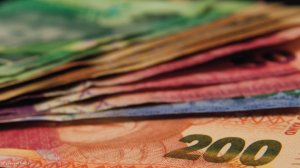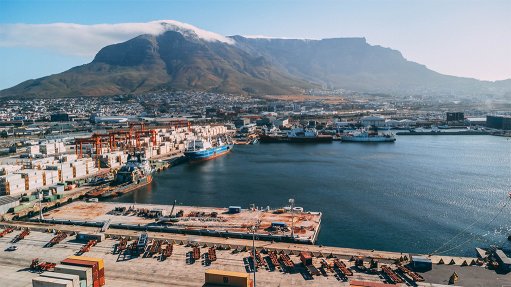New top tax bracket emerges amid revenue underperformance
Finance Minister Pravin Gordhan announced a new top personal income bracket of 45% for taxable incomes above R1.5-million in his 2017 Budget address as part of tax proposals designed to raise the additional R28-billion required to sustain the fiscal consolidation framework promised in previous Budgets.
The creation of the new tax bracket, together with only limited bracket-creep relief, is expected to raise an additional R16.5-billion in revenue, with the R11.5-billion balance to be raised from other sources, including:
• An increase in the dividend withholding tax rate from 15% to 20%, to raise R6.8-billion;
• A 30c/litre increase in the general fuel levy and a 9c/litre rise in the road accident fund levy.
• And increases in the excise duties for alcohol and tobacco, of between 6% and 10%.
Adjustments to the fuel levy and the excise duties are expected to increase revenues by R5.1-billion.
No adjustments were made to the value added tax (VAT) rate, while a revised Carbon Tax Bill would be published for public consultation and tabling in Parliament by mid-2017. The National Treasury did indicate, though, that it intended implementing a tax on sugary beverages “as soon as the necessary legislation is approved”.
Gordhan defended the tax changes, which focus on a narrow base of taxpayers, as remaining faithful to government’s progressive tax policy stance. He also highlighted the importance of tax as a redistributive mechanism, particularly in a society with high levels of inequality.
Coupled with expenditure-ceiling reductions of R10-billion, the deficit will still fall to 3.1% in 2017/18, or R149-billion. This is in line with the guidance provided in the Medium-Term Budget Policy Statement of October. However, there has been some “slippage” in the outer two years, with deficit projections of 2.8% and 2.6% for 2018/19 and 2019/20 respectively.
Overall, the 2017/18 Budget was proposed at R1.56-trillion, of which revenues covered R1.41-trillion. The remainder, or R149-billion, would be borrowed.
There was also some slippage in the outlook for debt, with the National Treasury forecasting that net debt would stabilise at 48.2% of gross domestic product (GDP) in 2020/21. Previously it had indicated that debt would stabilise below 48%.
Government debt currently stands at R2.2-trillion, or 50.7% of GDP, with interest payments set to rise to R169-billion in 2017/18.
Gordhan stressed that, in the absence of higher growth, the numbers would not improve and again stressed the need to find ways of bolstering growth, while making it more inclusive.
The National Treasury estimated that the economy expanded by 0.5% in 2016 and forecast that it would grow by 1.3% in 2017 and 2% in 2018.
It also reduced its tax-revenue estimate to R1.144-trillion for 2016/17, from R1.175-trillion previously, which was described as the largest tax revenue shortfall relative to Budgeted estimates since 2009/10. Projections fell short in three of the four main tax instruments. Personal income tax, VAT and customs duties were down by an estimated R15.2-billion, R11.3-billion and R6.5-billion respectively relative to the 2016 Budget estimate.
Gordhan has been at loggerheads with South African Revenue Service (SARS) commissioner Tom Moyane ever since his reappointment at Finance Minister on December 13, 2015, in the wake of the political and social fallout that followed President Jacob Zuma’s removal of Nhlanhla Nene and the short-lived appointment of Des van Rooyen to the post.
There had been four recent engagements between Gordhan and senior SARS officials in a bid to seek resolutions in the “interests of the country”. The Minister said he had also raised his concerns about the “shape of revenue collection”.
“But within the current growth environment, the Budget offers a good fiscal path mapped out for the next three years,” Gordhan said, adding that there was still enough money in the system, if spent properly, to meet many of government’s objectives.
Comments
Press Office
Announcements
What's On
Subscribe to improve your user experience...
Option 1 (equivalent of R125 a month):
Receive a weekly copy of Creamer Media's Engineering News & Mining Weekly magazine
(print copy for those in South Africa and e-magazine for those outside of South Africa)
Receive daily email newsletters
Access to full search results
Access archive of magazine back copies
Access to Projects in Progress
Access to ONE Research Report of your choice in PDF format
Option 2 (equivalent of R375 a month):
All benefits from Option 1
PLUS
Access to Creamer Media's Research Channel Africa for ALL Research Reports, in PDF format, on various industrial and mining sectors
including Electricity; Water; Energy Transition; Hydrogen; Roads, Rail and Ports; Coal; Gold; Platinum; Battery Metals; etc.
Already a subscriber?
Forgotten your password?
Receive weekly copy of Creamer Media's Engineering News & Mining Weekly magazine (print copy for those in South Africa and e-magazine for those outside of South Africa)
➕
Recieve daily email newsletters
➕
Access to full search results
➕
Access archive of magazine back copies
➕
Access to Projects in Progress
➕
Access to ONE Research Report of your choice in PDF format
RESEARCH CHANNEL AFRICA
R4500 (equivalent of R375 a month)
SUBSCRIBEAll benefits from Option 1
➕
Access to Creamer Media's Research Channel Africa for ALL Research Reports on various industrial and mining sectors, in PDF format, including on:
Electricity
➕
Water
➕
Energy Transition
➕
Hydrogen
➕
Roads, Rail and Ports
➕
Coal
➕
Gold
➕
Platinum
➕
Battery Metals
➕
etc.
Receive all benefits from Option 1 or Option 2 delivered to numerous people at your company
➕
Multiple User names and Passwords for simultaneous log-ins
➕
Intranet integration access to all in your organisation





















